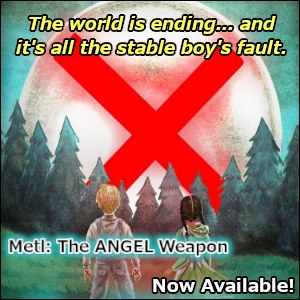Writing is more than just conveying information to a reader, but what does that REALLY mean???
Let’s discuss, practice, and “shellack some bars” together!
During the last stream, we went over how writing is more than just conveying information to the reader.
A few weeks ago, there was an interesting topic that came up during a section of a viewer’s freeshare:
Carrie put her phone away and sat back down at the bar. She was gonna have to grab the kid before Cobra got to him. Indeed, as if on cue, the guys walked in. Carrie got up and snagged the kid, sitting him down at the bar. He and his terrible bowl cut stared as Slaughter poured him a glass of water.
“Hey,” she said. “You alright? I’m sorry about my friend. He’s a little crazy-”
“No need for all that,” Cobra sat down on the other side of the kid. “Just go get the car battery.”
“I told you, we are not using the car battery!” Carrie turned back to the kid. “You hungry?”
The kid stared at Carrie blankly.
“You got a name at least- Cobra fuck off!” Carrie shot Cobra a death glare. “I told you no!”
The psychotic fairy had gone outside and procured a car battery and some jumper cables, which he plunked down on the shellacked bar. The creepy kid simply sat on one of the stools and stared at Cobra.
“So, uh,” Cobra waited for the kid to start talking. “Look, are we gonna need to use this?”
So that one part, “shellacked bar,” turned into a big discussion topic that we didn’t have time to go into detail about at the time… but now we have PLENTY of time to discuss in detail!
Basically “shellacked bar” conveys information to the reader, but it’s missing three things that stories typically want to have: clarity, fun, and ease of understanding
What do those mean specifically? How are they different from each other? And what are the bigger implications?
Today I want to talk about how/why writing is not just about conveying information, an idea that may seem obvious at first glance, but actually has a lot more to it
We’ll go over those three different aspects of the topic, and relate each back to “shellacked bar,” so let’s get started!
#1. Not Just Conveying Info… Having CLARITY Too!
- Take a look at this sentence: “The glasses on the staircase seemed out of place.”
- What kind of glasses are we talking about? Ones you wear? Ones you drink from? And where on the staircase?
- It’s impossible to know from that sentence alone
- Instead, something like this paints a clearer picture: “An out-of-place glass of water rested on each step of the staircase.”
- And that’s one of the elements of good writing: clarity
- Whenever we write anything, we can see it clearly in our own heads; the challenge is making it just as clear in someone else’s
.
- Not only do we want to clear up ambiguous sections, but we also want to have clarity of importance as well
- For example, this paragraph: “I put a bagel in my pocket. When I went to school, first period math class sucked. I found out that I failed that history test, the one I’d studied so hard for. When I tried to hide in the bathroom, Benny was puking in my favorite stall, so I left. For lunch, I ate the bagel.”
- You probably forgot about the bagel by the time the story got to it again, because the author didn’t make its importance clear
- Saying “But I mentioned it earlier!” is a sign of a beginner
- You can’t expect readers to keep track of everything you write, it’s up to YOU to weave gentle reminders into your story
.
- For “shellacked bar,” give us reminders we’re in a bar so we don’t forget, and so that we don’t think it’s like a crowbar or something!
#2. Not Just Conveying Info… Having FUN Too!
- Take a look at this sentence: “The spaceship was circular and about as big as a shed.”
- Sure, that sentence literally tells us what the spaceship looks like… but that’s about it, it’s not particularly fun/engaging
- In visual mediums like movies/manga, you can have fun pictures show how things look; but in written mediums, like novels and short stories, you need fun language to do that
- Instead, something like this is much more fun to read: “The spaceship was round and rusted, like an old hardened tomato that fell forgotten behind a fridge. The damn thing was shockingly small too, probably wouldn’t even be allowed to ride the ferris wheel at the county carnival.”
. - And that’s another element of good writing: fun
- Whenever we write, we’re having fun with the story, because we’re creating it and know the cool things that will happen next
- But readers are only going through your story one sentence at a time, so you need to make sure they’re enjoying it in the moment, or else they’re going to check out
- You can do that by making the language itself fun to read
. - For “shellacked bar,” go into detail: how is it shellacked? What does it specifically look like? Does it have a smell? What does the character think of it? Does it remind them of something?
- Adding those in will make the section much more fun to read
#3. Not Just Conveying Info… Making it EASY to Understand!
- Take a look at this sentence: “Something was off with her conjugations. She was using third person plural instead of third person singular.”
- To me, that’s perfectly understandable and fine. But for the average reader, it’s a bunch of unintelligible jargon
- If the goal is to have a character speaking in jargon, then congrats, but if the goal is to write a normal story, you’ve failed
- Instead, something like this is better: “Something was off with the way she was speaking. She kept saying things like ‘he want’ instead of ‘he wants.’”
. - It’s another element of good writing: ease of understanding
- Remember, when writing, we’re not trying to show off how smart we are, we’re trying to entertain readers
- And we really mean entertain! Lots of people like using rare words when writing, but the best stories don’t teach readers by forcing them to use a dictionary/Google, rather they teach readers through the story itself and its themes
- The goal of your story should be 100% understandability for your target audience, and anything that drops that percentage down, even a little, should likely be tossed away
.
- For “shellacked bar,” some people might not know what that word even means, so add in some details, give context!
- If 50%, if even 1% of your readers don’t understand it, then change it, because your small sample size is only going to grow if you publish your story
After that we practiced writing a short scene using those three elements, and chat voted we write about this topic:
Deciding whether to throw away an old memento.
Here’s what we wrote:
I held the elephant action figure in my hand right above the trash can, wavering on what to do. The thing was horrid, more like a small plastic demon summoned by someone who had never seen an elephant before than a toy made for kids. Tusks? Sure. Tusks come out of the nose, right? And big ears! Half the size of the rest of its body clad in shades-of-gray army camouflage.
Dennis and I used to play with these things, Pachyderm Protectors they were called. Slamming them against each other in the mud pile in his backyard on weekends in third grade. Good times. I’m pretty sure they cost like twenty bucks each, a hell of a lot for Mom back then, and how did I show my thanks? By basically breaking it each week.
But I put it back together and cleaned it up each time. Only a bit of old mud was caked in its cracked arms like brown and black varicose veins. It smelled like earthworms and wet cardboard — honestly not bad for how long it’d been festering in the attic.
Anyway, it had to go. But my fingers just wouldn’t release it to sleep with the other snot tissues and old coffee filters in the trash. The damn thing tugged on my heartstrings in a way that I didn’t expect. A memory fissure that rumbled to the surface. A physical remnant of younger me — where all the tribulations of the day did not exist. Just me and Dennis and a sunny third grade weekend.
Without thinking, I swung the Pachyderm Protector back into the shoebox I’d found it in, and slipped it under a cabinet in the kitchen.
I’d left that boy in the past. But not by choice. I wasn’t going to throw out the last piece of him too.
Mom would be proud to know her $20 was well spent.
Note how we clearly described the figure, how we gave context to help easily understand the character wavering, and had fun in describing them both, not just spelling out surface-level feelings.
If you want to join us and help write a story by trolling in chat, or share your own writing for feedback, then we’d love to have you join us on Twitch.
And you missed the stream, you can still watch them on the YouTube channel or watch the full stream reruns.
Hope to see you next time, friend!
 Featured image: Pakutaso
Featured image: Pakutaso
